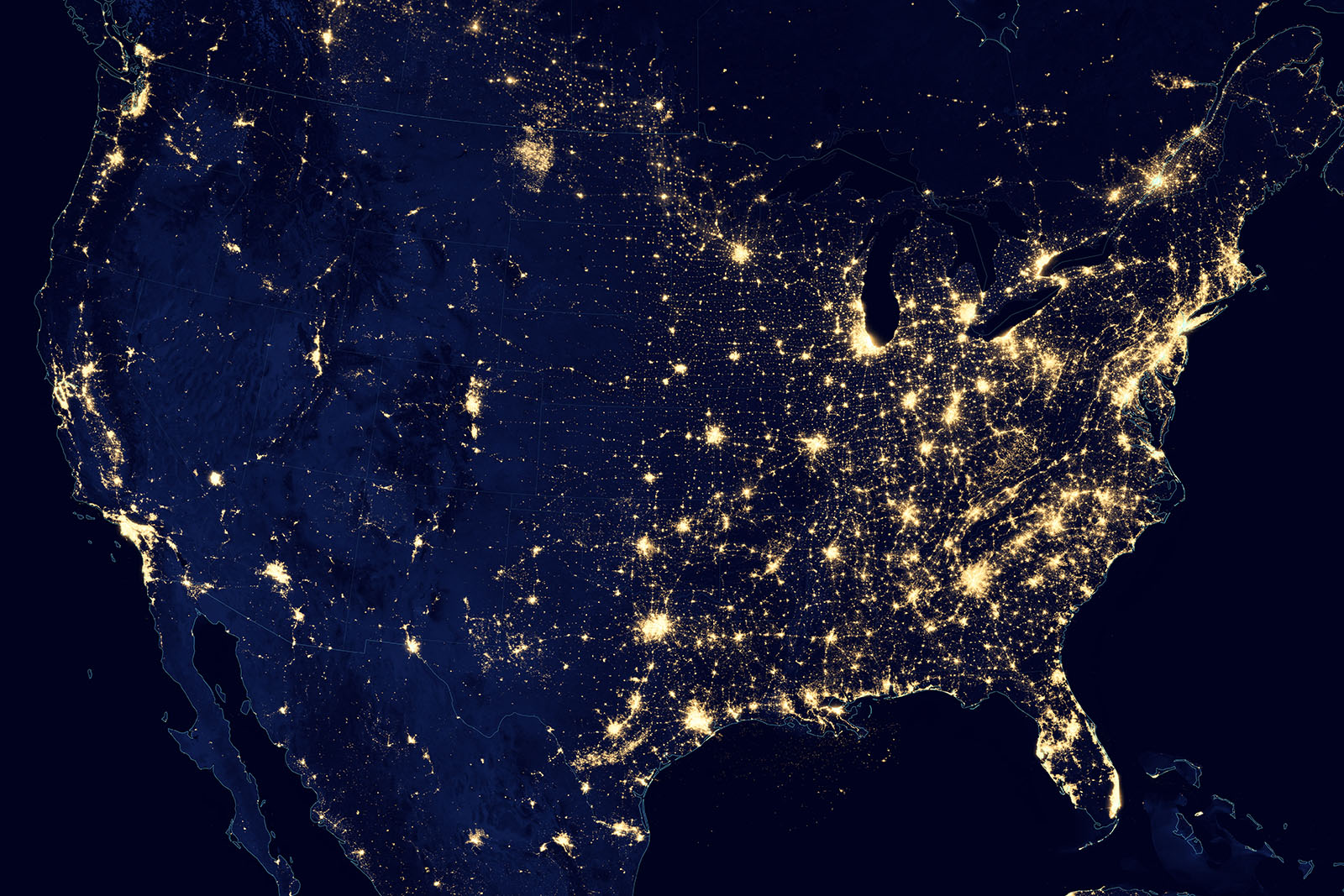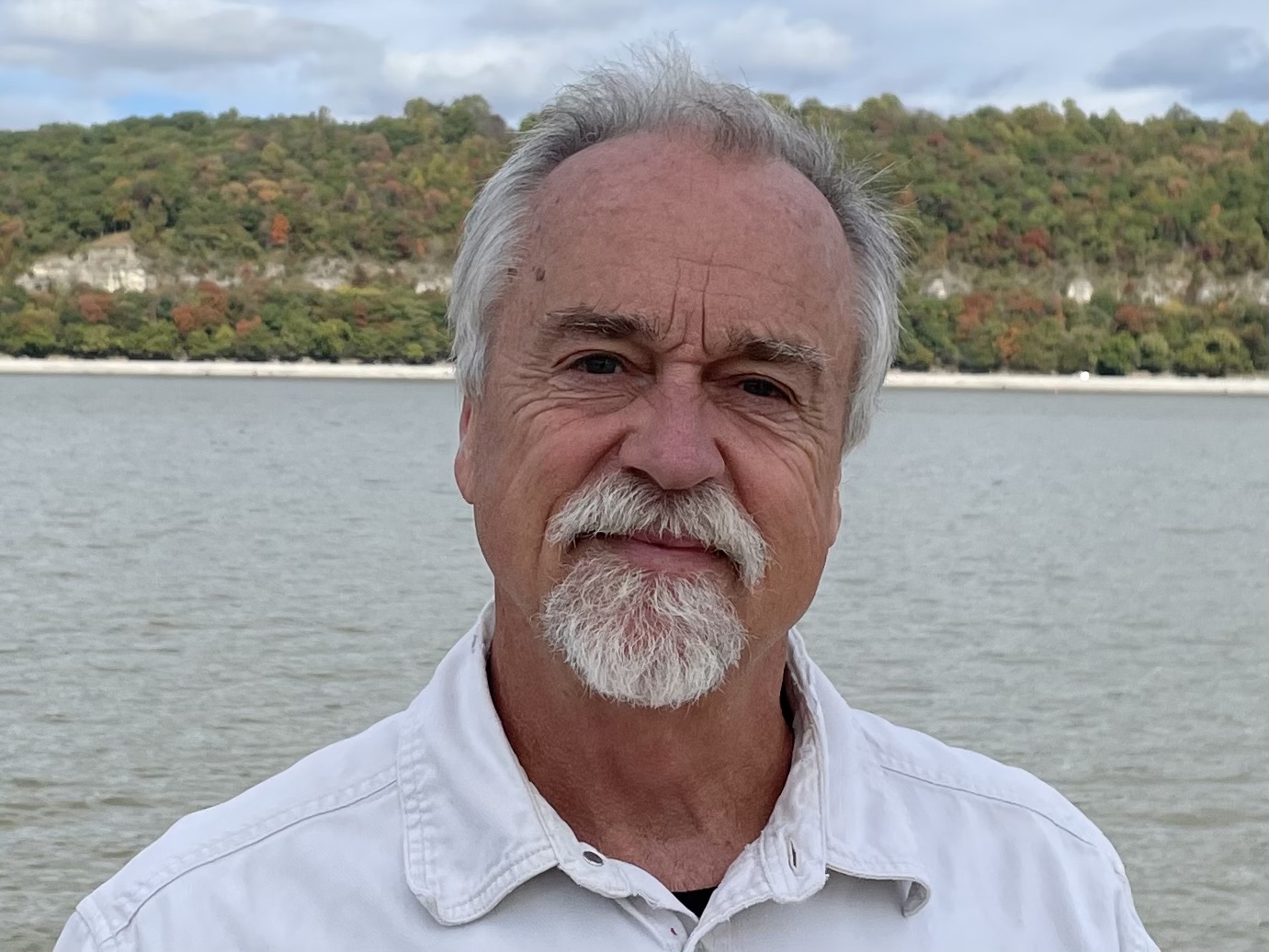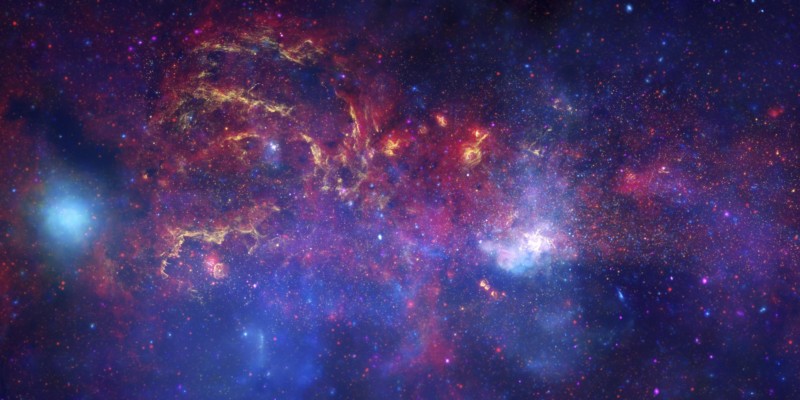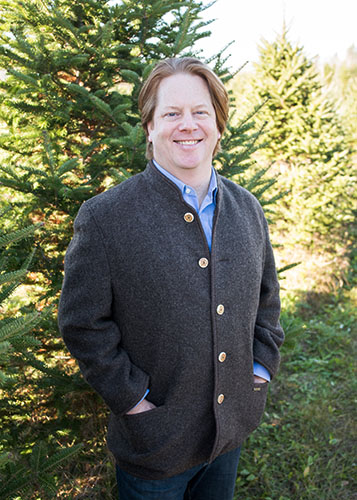If Vincent Van Gogh lived in Springfield today, we wouldn’t have a Starry Night. The dome of light that bathes the Queen City of the Ozarks so obscures our sky that only the brightest of stars are visible at night. Forget about seeing the Milky Way.
Beneath the dome, our neighborhoods, streets and office buildings are illuminated with artificial light from sundown to sun up, using energy for the sake of aesthetics and the belief that more light equals more safety. (But behind closed doors, we curse the neighbor’s dusk-to-dawn spotlight drilling through our bedroom window.)
Loring Bullard is on a mission to help Springfield lift that dome. The longtime crusader for the Ozarks’ clean water is returning to his decades-long fascination with star-filled skies. It’s time everyone did, he says.
“This is something that nobody was paying much attention to around here. As our population has grown, so has the amount and intensity of the light we’re sending out,” he says. “Springfield is sort of the gateway to the Ozarks. We’re very ‘outdoors.’ We promote hunting and fishing and floating. We should also be promoting ourselves or region where we can still see the dark sky.”
Bullard doesn’t want to turn the lights off. He just wants to turn them down.

How the light affects us
That’s the mantra of the global “dark skies” movement, and followers say it’s not merely an issue of wasted energy. Worldwide, biologists and medical researchers point to evidence that the barrage of artificial light is linked to some cancers, obesity and depression in humans. Environmentalists say indiscriminate use of outdoor and blue-spectrum light affects the migration and reproduction patterns of pollinators, birds and other creatures.
Dark sky advocates preach the Five Principles of Effective Lighting: All light should:
- Have a clear purpose
- Be directed only to where needed
- Be no brighter than necessary
- Used only when it is useful
- Uses warmer color lights where possible
Using those principles, proponents have restored starry nights in major European cities and U.S. places like Tucson, where even downtown you can see the Milky Way; Flagstaff, Arizona; the Grand Canyon and many national parks. Sea turtles were migrating toward the shimmer of beachside resorts until some coastal U.S. towns dimmed the lights so they veered out to sea. Some urban centers use technology that turns off the lights of skyscrapers for a few minutes every quarter hour to prevent birds from becoming attracted to and disoriented by lights and crashing into buildings.
Watching Missouri skies
Bullard serves on the board of the Missouri Chapter of the International Dark Sky Association. The group created this enlightening video demonstrating what the St. Louis sky would look like if there were no light pollution:
The 70 members include astronomers, biologists, business leaders and economists. Wait, economists? Surprise, says Missouri State University economics professor Terrel Gallaway. Since the 1990s, economists have researched the loss of the night sky from the standpoint of aesthetics: How it affects housing desirability and prices, and tourism.

Bullard will join other dark sky advocates on Friday and Saturday (Sept. 30-Oct. 1) for the chapter’s second annual conference hosted by the Johnson County, Kansas, Community College for Sustainability. “Vanishing Night: The Urgent Need to Save the Night,” invites the public to learn the science and growth of light pollution, its impacts on nature, birds and human health, and how to stop it.
“Missouri is very early in the process,” says Don Ficken, a retired St. Louis amateur astronomer and president of the Missouri chapter. Since launching in 2018, the group has met with city and parks officials statewide, including Springfield, to raise awareness of light pollution, explain how reducing it can lower energy costs, and promote quality outdoor lighting to protect the natural environment.
“Their feeling was this is a good gateway to the dark Ozarks, and they really want to support that. It’s a quality of life thing,” Ficken says. “Springfield has light pollution, but if it can reduce the amount of light in Springfield, it will protect what’s dark just outside of it.”
He knows that kind of change requires a bigger conversation with government and business where it relates to street lighting, parking lots, buildings and commercial development. But he adds, “We continue to stress: We’re saying ‘dark skies,’ not ‘dark ground.’ What’s the point of illuminating the top of a tree?”

In each region across the state, the chapter has installed “sky quality meters” to measure light pollution. The result is a telling map posted on Dark Sky Missouri.
“The thought is that we can protect the dark places, and we have a few left.” He cites places in the Mark Twain National Forest and the northern Missouri/ Kirksville area. Stacy Park near St. Louis is only the fourth park in the world designated as an Urban Night Sky Place.
Turning it down, not out
Bullard brings the conversation closer to home. With all the issues humankind faces, he says, “It’s one of the simplest environmental problems to solve. It’s mainly an awareness issue. If you’re shining a light into space, that’s wasted energy, and you’re not helping anything. When you go driving around Springfield, you can just see so many examples of too much light.”
MSU’s Gallaway points to the globe lights around campus — “A significant portion of the lighting is going straight up into the sky, and it isn't doing any good.” By contrast, down lighting and light shields at places like the Bullard’s former home base, the Watershed Center, Discovery Center of Springfield and many LEED-certified buildings direct light only where it’s intended.
“Warm light is better for aesthetics and better for the environment,” Bullard says. “This blue, high-intensity, even LED blue lights, are bad for the environment, so what we try do to is provide warm-color light, softer light, and the right amount in the right place.”
But, Springfield homeowners love their outdoor accent lighting. Do we turn off the switch on all those pretty stone facades?
“It kind of goes back to how it’s done,” Bullard says. “Lighting and aesthetics is a good field for lighting designers to take a look at.” The Eiffel Tower in Paris used to be illuminated with a huge spotlight. A lighting designer showed a way to use less energy and less light, and still improve the aesthetic of the structure.
“You can use the same idea at home,” he says. “You can have lighting that is very subdued. Low down to the ground, or not shining up in space may help the aesthetics of the home. Maybe they should go off at midnight. A lot of this is common sense. You don’t necessarily need to be paying a light bill to have a light going all night long.”
Dark Sky Missouri's website offers practical how-tos for solving most lighting issues — sources for dark sky-friendly fixtures, products to minimize glare, alternatives for residential and business lighting, and a section called My Neighbor’s Lighting: “Are your neighbor’s lights shining on your property and home? Learn how to talk to your neighbor to resolve this problem.”
It even links to a Sample Letter to Your Neighbor. “I was sitting on my deck trying to enjoy a beer one summer evening at my house,” Bullard recalls, “and this neighbor’s porch light is shining right in my eyes. Dang! Why?”
He kept the exchange civil, and offered a compromise. The neighbor accepted Bullard’s offer to buy and install a shield, so the light directed downward and still illuminated what the homeowner was trying to protect. A similar episode with a different neighbor didn’t end as successfully, but nobody got punched, either.
Some cities including Springfield have lighting standards on the books against “light trespass.” The two-page ordinance mentions that exterior lighting “should be arranged to minimize light spillover onto any adjacent premises; and so that light from any illuminated source shall be so shaded, shielded or directed that the light intensity or brightness will not adversely affect adjoining property.”

The legacy fear of the dark
Springfield’s Building Development Services are the code enforcers. A citizen can start the process by making a complaint to the Citizen Resource Center. Once the city receives a “light trespassing” complaint, an inspector is assigned to go onsite in the dark and document the scene after notifying the property owner, says Brock Rowe, interim director of the city's Building Development Services.
If there's a violation, the inspector follows formal steps to post a zoning violation notice that is mailed to the property owner and occupant, who have 10 days to correct the violations before a re-inspection. If not resolved, the case moves to legal action that may go to a municipal court hearing.
The City of Ozark, where MSU’s Gallaway lives, passed a dark sky ordinance in 2021 designed to minimize lighting impacts while preserving the viability of the night sky, according to a city news release. “We’re already getting pushback on it,” Gallaway says.
“Part of it is the legacy of the fear of the dark,” Bullard says. “And lighting companies and law enforcement agencies have been pushing this idea that more light is always better, always safer. But we have not determined that more light makes you more safe. It actually creates dark shadows and layers,” where intruders can hide. And a blinding beam prevents nearby neighbors from seeing if an intruder is hiding near the “protected” property.

Paul Bogard is the keynote speaker at the weekend dark sky conference and a celebrated authority and author of books on dark sky issues. He is an associate professor of English and Environmental Studies at Hamline University in Saint Paul, Minnesota.
“True safety comes from using light intelligently and thoughtfully, not just blasting it all over,” he says. “Light sent into the sky makes no one safer.”
As Springfield and Missouri grapple with light pollution, Bogard says, there’s always hope. “Lights burn out and need to be replaced, and new technologies come along regularly. There’s always a chance to choose better lights, lights that are fully shielded and shine only down, where we want them, rather than in all directions.” He adds, “Let’s use light like good neighbors — only what we need, where we need.”
Bullard is one who has hope — hope that the Ozarks one day becomes a dark sky destination. It would benefit the environment, tourism and us.
“We need to preserve our piece of this outside heritage of the night sky and have people educated about why we need to do that and what they’re missing if they don’t do it.” Stargazing beneath a truly dark sky, he says, “It’s an overwhelming beauty and you also have this sense of infinity. It’s good for your soul.”
Want to attend the conference?
“Vanishing Night: The Urgent Need to Save the Night” is a free conference Friday, Sept. 30, and Saturday, Oct. 1, on the campus of the Johnson County Community College Center for Sustainability, Overland Park, Kansas.
Sept. 30, 6:30 p.m., informal gathering and tours of Powell Observatory by the Kansas City Astronomical Society.
Oct. 1, 9 a.m.-4:30 p.m. programs feature over a dozen speakers and exhibitors. At 7 p.m. author Paul Bogard will give a talk based on his book “The End of the Night: Searching for Natural Darkness in an Age of Artificial Light.” Bogard will address how the night sky has influenced the human experience and the value of darkness.
For information visit darkskymissouri.org


